New products at Crocus
by Sarah - September 2nd, 2010.Filed under: Crocus, New Products.
Crocus just added these new products
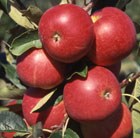
apple – self fertile £29.99
Position: full sunSoil: fertile, well-drained soilRate of growth: average to fast-growingUltimate size on MM106 rootstock: 5.5 x 5.5m (18 x 18ft)Flowering period: April and MayHardiness: fully hardyPollination Group: C – flowering mid to late seasonThis is perfect for smaller gardens as you dont need another tree to produce a bumber crop of sweet, crisp and aromatic fruits that are ready to eat in September. It will be happy in a large pot, as long as it is kep well fed and watered, and it has a good resistance to many of the common diseases. We think it is going to be very popular. Garden care: Keep the base of the tree weed free, fertilise at the beginning of each year and water regularly during hot, dry spells. Remove damaged or crossing branches during the dormant season.Pollination Information: This apple belongs to pollination group C, however it is self fertile, so does not need a pollinating partner to produce a bumper crop of apples. It can also be used to cross-pollinate with other apples in this group.
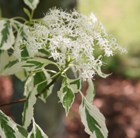
wedding cake tree £29.99
Position: full sun to part shadeSoil: deep, fertile, moisture-retentive soilRate of growth: slow-growing to averageFlowering period: JuneHardiness: fully hardyKnown as the wedding-cake tree, because of its distinctive, horizontal, tiered habit, this tree makes a lovely focal point for small to medium-sized gardens. It has bright green leaves with bold, creamy-white margins which turn red-purple in autumn and produces clusters of white flowers in June. Although it tolerates dappled shade, it performs best in fertile, moisture-retentive soil in full sun.Garden care: Incorporate a quantity of well-rotted garden compost or horse manure in the planting hole to improve the moisture-retentive qualities of the soil. The tree requires no regular pruning, since this would interfere with its graceful, tiered habit.
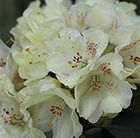
hybrid rhododendron £21.99
Position: partial shadeSoil: moist, well-drained, humus-rich, acid soil or ericaceous compostRate of growth: fast-growingFlowering period: MayFlower colour: yellowOther features: autumn colourHardiness: fully hardyIn early summer, clusters of trumpet-shaped flowers appear above the lustrous, evergreen foliage. Each flower is a pale golden colour that seems to glow in the early morning light and the upper lobes are lightly freckled with reddish brown. This rounded shrub looks beautiful in a woodland setting, or can be planted up in a large tub filled with ericaceous compost and placed on a partially shady patio.Garden care: Avoid planting too deeply. Apply a generous 5-7cm (2-3in) mulch of leaf mould around the base of the plant each spring.
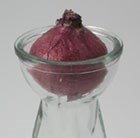
hyacinth-bulb-vase £15.99
This bulb vase is perfect for growing prepared hyacinth bulbs in. To enjoy the intoxicating fragrance of hyacinths at Christmas and New Year, all you need to do is start growing you bulb in September or October. Fill the glass to the neck with water and then place the bulb in the top. The water level should be just below the bottom of the bulb. Keep the water topped up and the bulb in a dark place until the shoot is about 4-5cm tall. Then move it to a sunny spot indoors and watch it grow and flower.The bulb vase is 14cm tall.
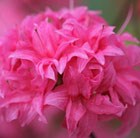
deciduous azalea £14.99
Position: partial shadeSoil: moist, well-drained, humus-rich, acid soil or ericaceous compostRate of growth: averageFlowering period: MayFlower colour: bright pinkOther features: one of the most popular pink flowering varietiesHardiness: fully hardyCompact, rounded trusses of bright pink, semi double, funnel shaped flowers in late spring and medium sized, mid-green leaves. This bushy, deciduous azalea is one of the most popular pink flowering varieties. Ideal for a well-drained, shrub border with humus-rich acid soil, a mass planting is guaranteed to create an eye-catching display.Garden care: Avoid planting too deeply. Apply a generous 5-7cm (2-3in) mulch of leaf mould around the base of the plant each spring.
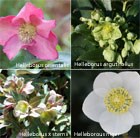
hellebore collection £14.99
Position: partial shadeSoil: neutral to alkaline soilRate of growth: average Flowering period: January to AprilOther features: all parts of the plant cause severe discomfort if ingested; the sap may cause skin irritation; dark greyish-green leaves give off an unpleasant odour when crushedHardiness: fully hardyHellebores herald the start of the new year with their gently nodding flowers that open as early as January. The large saucer-shaped flowers and attractive foliage makes them ideal for the front of an early spring border.This fabulous collection will normally contain 1 x H. x sternii, 1 x H. argutifolius, 1 x H. niger, 1 x H. foetidus and 2 x H. orientalis, however it can vary slightly dependant upon the season.Helleborus x sternii: Easy-to-grow with clusters of showy green flowers tinged pink and purple (Feb-Mar), 35cm tall.Helleborus argutifolius: Stunning evergreen foliage and subtle green flowers that appear in late winter and last well in to early summer (Feb-Jun), 40cm tall.Helleborus niger: The Christmas rose, which produces gently nodding white flowers (Jan-Apr), 30cm tall.Helleborus foetidus: Nodding, bell-shaped, pale green flowers with purple edges appear above clumps of deeply divided dark green leaves (Jan-Apr), 80cm tall.Helleborus orientalis: One of the most popular hellebores with its captivating range of flower colours from white through to slate black (Feb-Apr), 45cm tallGrow hellebores in a partially shady spot that’s nice and sheltered as strong, icy winds can damage their blooms. Remember to dig in plenty of organic matter in to the soil when you plant and mulch every spring.
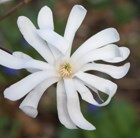
star magnolia £12.99
Position: full sun or partial shadeSoil: any moist, well-drained soilRate of growth: slow-growingFlowering period: March to AprilHardiness: fully hardyA popular, compact, bushy shrub or small tree with mid-green leaves and silky buds which open up to large, pure white, star-shaped flowers, sometimes faintly flushed pink. The flowers are lightly scented, and open very early, before the leaves, eventually covering the shrub for several weeks. This is one of the best magnolias for a small garden.Garden care: Plant in a sheltered spot, away from strong winds. It is best left unpruned and allowed to develop naturally. The best time to plant is in April, adding plenty of peat to the planting hole, in a sheltered spot. Mulch in spring with manure and leaf mould, especially on dry soils.
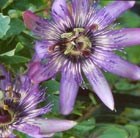
passion flower £12.99
Position: full sun or partial shadeSoil: moderately fertile, moist, well-drained soilRate of growth: fast-growingFlowering period: July to SeptemberHardiness: frost hardy (needs winter protection in cold areas)A really exotic-looking plant, with showy purple flowers and contrasting purple and white filaments from July to September, followed by egg-shaped, orange-yellow fruit. The leaves are pretty, too, deeply lobed, dark green and glossy. It is a trouble-free climber that thrives in hot summers and will quickly cover a sunny wall or fence. This variety is particularly vigorous and free-flowering. Ideal for a tropical planting scheme, it grows best at the base of a sheltered wall in full sun, although it will tolerate some shade. The fruit are edible, but not very tasty! Passion flowers are believed to represent the suffering of Christ on the cross and the mysteries of the Passion. The 17th century monastic scholar, Jacomo Bosio, describes ‘the column rising in the centre of the flower surrounded by the thorn of crowns (and) the three nails at the top of the column. In between, near the base of the column is a yellow colour about the size of a reale, in which there are five spots or stains (stamens) of the hue of blood evidently setting forth five wounds received by our Lord on the cross.’Garden care: Choose three to five of the strongest shoots, tying them in to horizontal wires. Once the plant is established, cut back the flowered shoots immediately after flowering to within two or three buds of the permanent framework of the plant. In spring remove dead, misplaced or overcrowded stems.
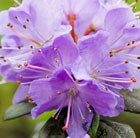
dwarf rhododendron £11.99
Position: partial shadeSoil: moist, well-drained, humus-rich, acid soil or ericaceous compostRate of growth: averageFlowering period: April and MayFlower colour: bluish-purpleOther features: dark green leaves, retained all yearHardiness: fully hardyMasses of funnel shaped, bluish-purple flowers in mid and late spring, fading to pale lavender-blue, and small, dark green leaves, retained all year. This attractive, evergreen rhododendron is perfect for a raised bed with humus-rich, acid soil. Renowned for its fine foliage and compact habit, it does best in full sun.Garden care: Avoid planting too deeply. Apply a generous 5-7cm (2-3in) mulch of leaf mould around the base of the plant each spring.
clematis (group 1) £9.99
clematis (group 1) £9.99
clematis (group 1) £9.99
flowering quince £9.99
evergreen azalea £9.99
evergreen azalea £9.99
lily-turf £8.99
clematis (group 3) £8.99






